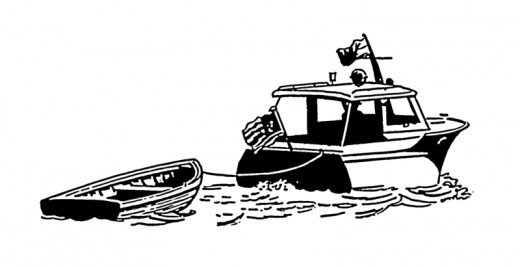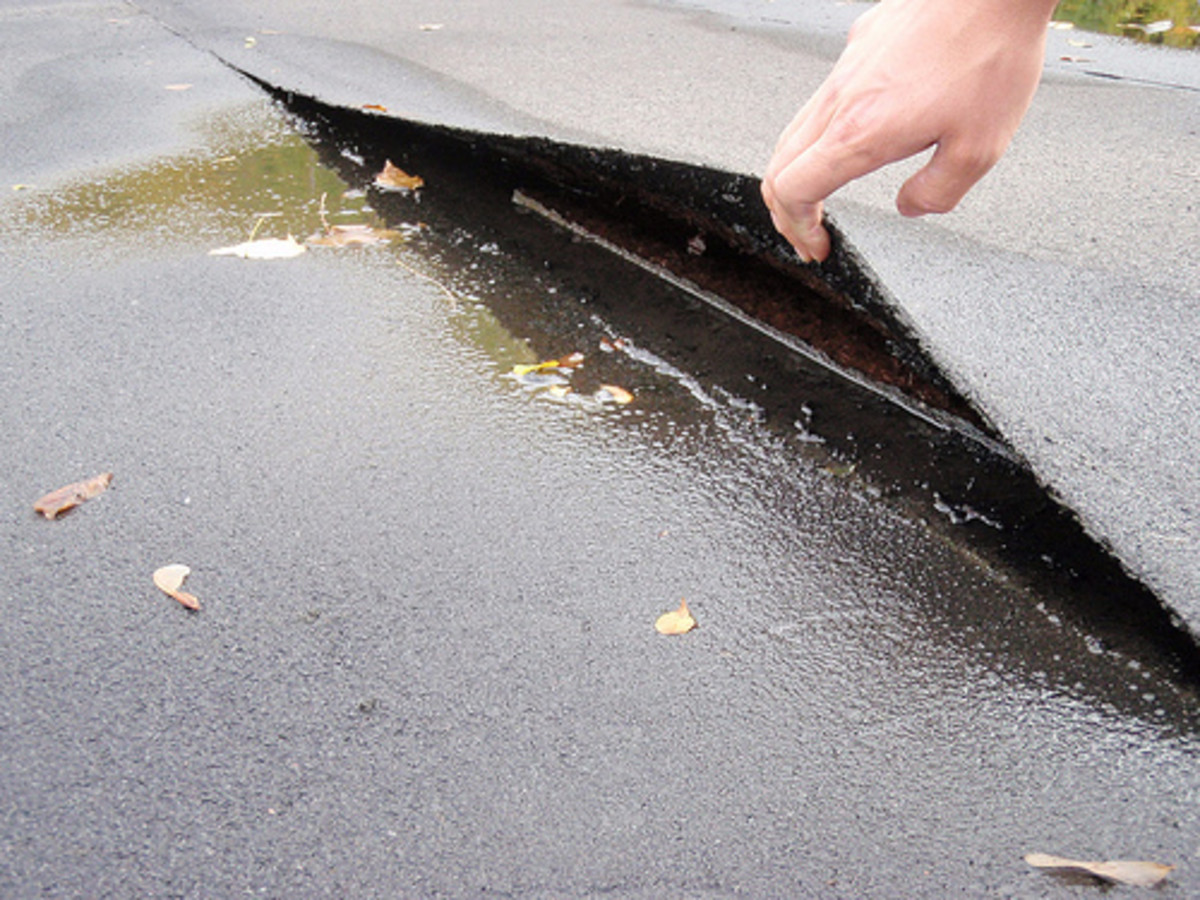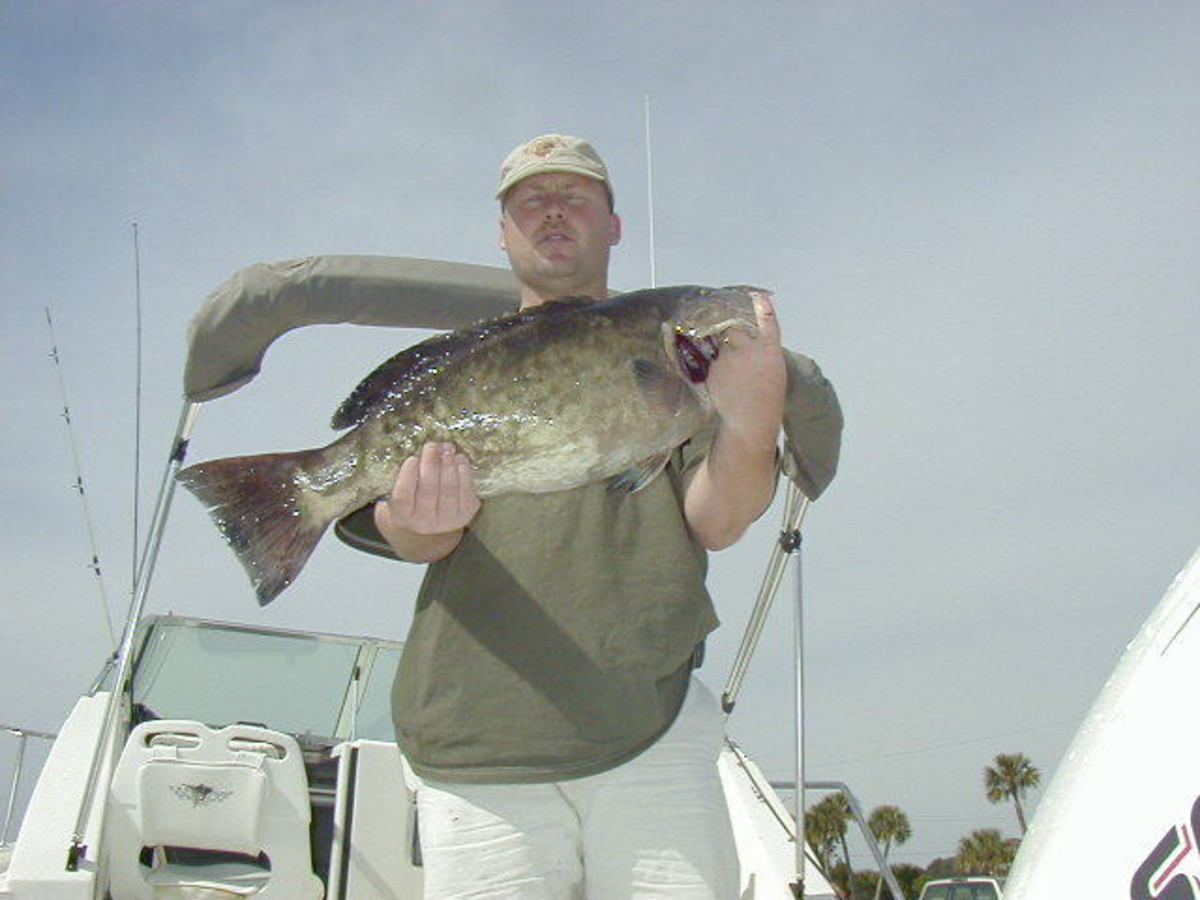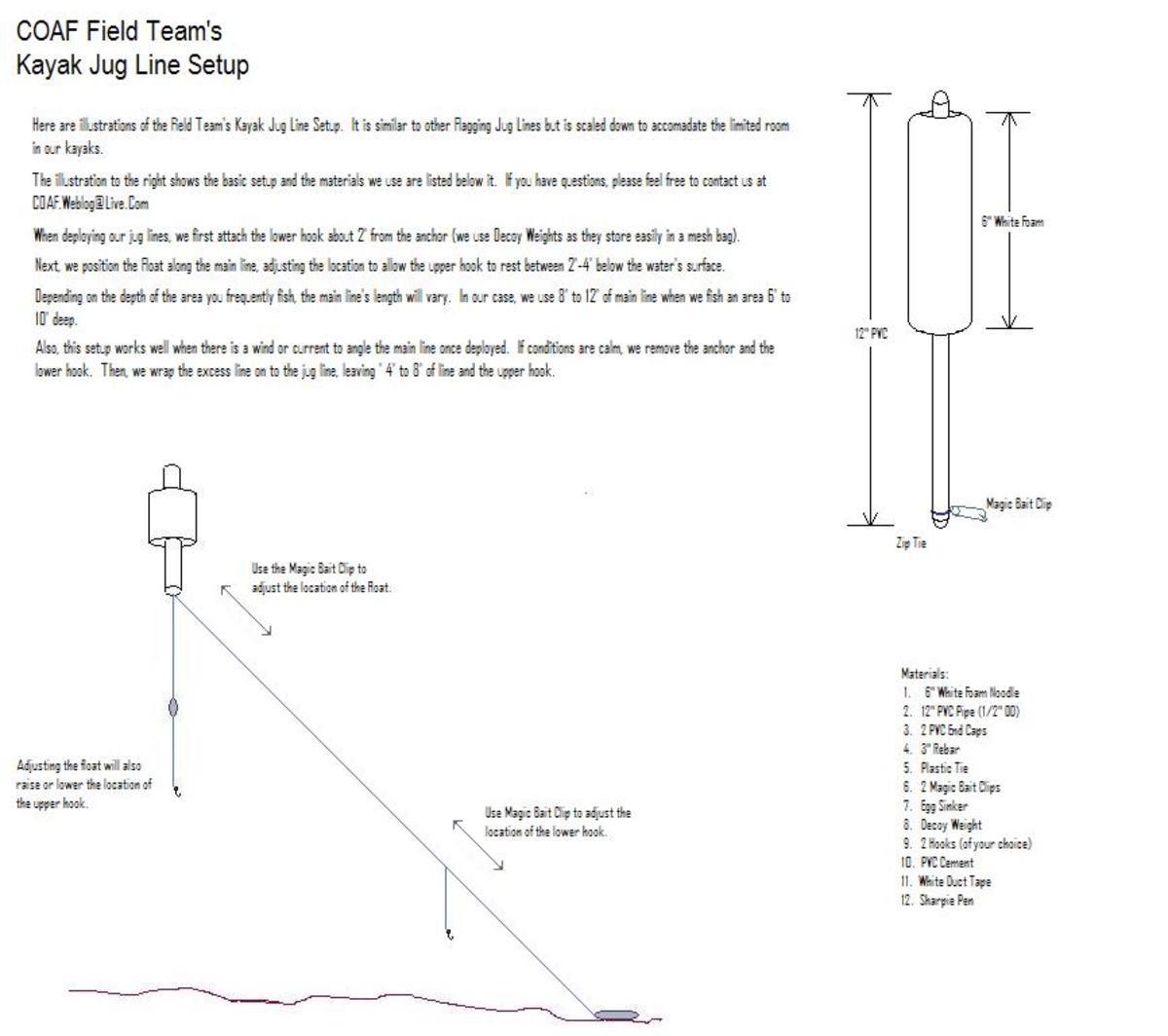The Safe Boating Guide & Important Things To Know : Different Types Of Motorboats : Pleasure Crafts
What makes it a Pleasure Craft?
The phrase 'pleasure craft' is used basically to define any boat which may be used solely for the purpose of having FUN! Here in Canada, you must have a 'Pleasure Craft Operator Card' to operate a boat of any size which is propelled by an engine. A pleasure craft may be small enough just for a day out on the water, or, for the more adventurous or prosperous types, there are also vessels which may be used for any number of different things (except for making money) or even ones that are big enough to live on. In this case, it would be called a 'live-aboard.' Here's a link to Transport Canada's PCOC (Operator Card) page on frequently asked questions about it : http://www.tc.gc.ca/eng/marinesafety/debs-obs-paperwork-paperwork_operatorfaq-2233.htm#c (Copy it, then paste into your address bar!)
A beautiful wooden Yacht :
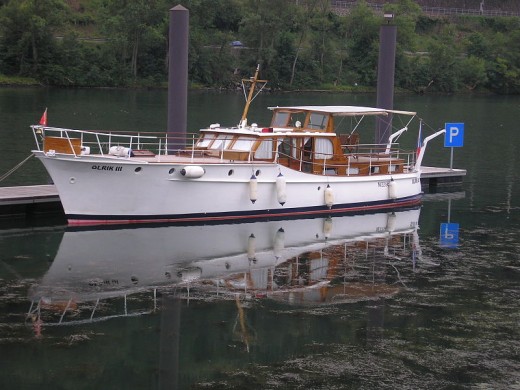
Yachts & Cabin Cruisers :
The term yacht is used to define a large, accommodating vessel of 40 feet or more. One which is more than 100 feet long will be called a mega yacht, and one that is any longer than 150 feet may be called a super yacht. A cabin cruiser is just like a yacht, it is simply smaller. Any boat which has a cabin and is between 25 to 40 feet would be considered a cabin cruiser. (These boats are a wonderful choice for a new-found captain, as they are normally easy to take care of. They can be trailered around too, (most of them) so if you have the garage space, you can save money on moorage.)
Up until the 1950s, most yachts were exclusively built from wood. Though, as with most other recreational vessels these days, both vessel types are usually constructed from fiberglass. This is because fiberglass boats are not only more lightweight and strong than other materials used, but they are also relatively easy to clean and care for. Aluminum, steel, ferrocement and carbon fibre are sometimes used as well. Yachts are typically fitted with one or two inboard engines. You may occasionally see smaller cabin cruisers equipped with one, or more likely, two large outboard engines.
(Note) : ~ Large sailboats may also be called a yacht. The term has been used for centuries to describe the huge tallships which were mostly employed with transporting cargo.
~ These boats often are used for chartering, in which case, they would be called a commercial vessel.
~ If you are into the 'off the grid' type of lifestyle, these types of boats will often be used as a live-aboard. As long as you have adequate living space, (and a generator!) these can be very comfortable and pleasing to use for a 'round-the-world' trip, or even just to 'squat' wherever you like. 'Boat life,' as I have found, is actually quite a bit more charming and favorable to 'house life'. Having real power and water to your boat at all times (and perhaps even a shed) is most optimal. (Even when you are not there, it's best to not have to worry about your boat sinking on you!)
A row of moored Cabin Cruisers :
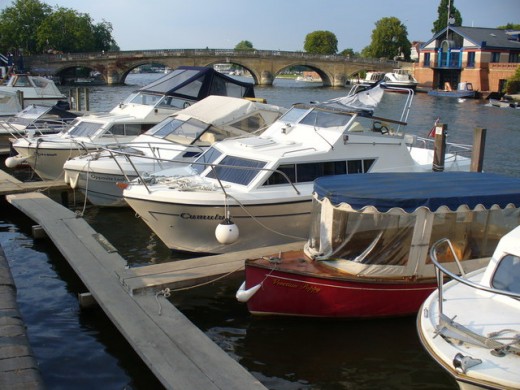
The Runabout :
Why do we call it a runabout? Well, a runabout is any smaller, fast boat which may hold from between four to eight people. They are often used for racing, or often a 'tender' for a larger vessel. The hull design is normally one which would provide for the most hydroplaning action as possible. (This means that the boat should 'skip' across the water, rather than pushing through it.) Aluminum is often the choice material for construction as it is light. Fibreglass is the other top choice, due to the ease of cleaning and lack of corrosion. They may have either outboard engines or inboards. (Jet drives are often seen as well.)
There are some 'sub-species' of the runabout as well, such as :
~ The bow rider : These boats are typically in between 17 to 30 feet and hold 6 to 10 people. Unlike a cuddy boat, these have more seats forward than others, in front of the helm area. Equipped with either outboards or a stern drive, these vessels are well-suited for lakes and inland boating adventures. They are not meant for the sometimes dangerously large waves of the open sea.
~ The cuddy boat : A 'cuddy' is another, more well-used by mariners word for 'cabin'. A cuddy boat is very similar to a bow rider with a few exceptions besides the one mentioned : Whilst bow riders often have full amenities, cuddy boats normally only have a small amount of shelter, sometimes not even enough to stand up in. They may have a small v-berth and a head. (toilet) Ranging in size from 18 to 28 feet, these may have either a inboard or one or two outboards.
~ The center console : A center console is a vessel which has a singular, roomy deck, with the helm console near the center. Every now and then you will see one which has a cabin near the bow, sometimes with a berth, which provides some respite from longer trips. (As with a cuddy, however, these should not be taken on very long voyages.) The helm area may also have a cover of some sort, though this is not usual, as it interferes with fishing lines and such. (And that's what these boats are mainly used for.) Center consoles usually are powered by outboard motors.
~ The Walkaround : This is rather of a cross between the center console design and a cuddy boat. As with the center design, there is a large amount of deck space, and it's primary function is for fishing. However, it also always has a small cabin (cuddy) equipped with a berth. Often, there will be a head in front of the helm area. In the mass-produced versions, there will be stairs which lead to the bow and also a lower gunnel. This provides for even more space. With custom-built walkaround designs, the gunnel will be as low as possible, with no steps. Most customs have inboard diesel power, while the mass-produced ones normally
Just your average (28-foot) wooden Runabout :
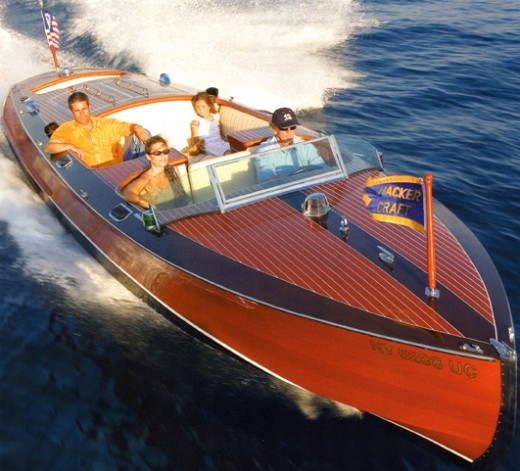
Pleasure Tugboats :
Tugboats are normally used as commercial vessels for towing or pushing other vessels. They also are often used for maneuvering log booms, and usually come equipped with firefighting hoses, especially the ones that stick close to the harbour. Many people like to own their own tugboats for several good reasons. For one, they can sure as hell take a beating. For their size, they are remarkably strong. Some of them can travel the open seas. They can mow through ice, help to salvage sunken vessels, and a million other uses which can really come in handy when you REALLY need it. Plenty of people use the existing vessels as a live-aboard, (when there's room for it) or build upon it and make it bigger. (Just remember, don't build it too big, or you won't be enjoying those massive ocean waves!) Initially, tugs were powered by large steam engines and had paddle wheels. Soon after using this for a few years, we realized that propeller-driven diesel inboards are much more efficient. (Sometimes, jet drives may be used as well.) Most tugboats and pleasure tugs are constructed from wood, but these days, steel is often used. (Especially with the commercial tugs.)
A Pleasure Tug at home in Boston
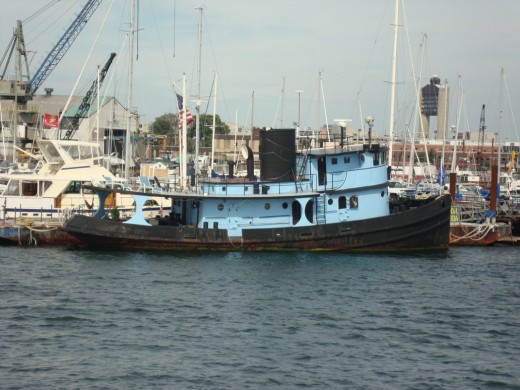
Recreational Trawlers :
These boats closely resemble commercial fishing trawlers. However, they come in a wide variety of different designs, materials, and sizes, which are more for the purpose of looking pretty than anything else. However, there are some functional differences, such as hull types. Most commercial trawlers have a displacement hull and cannot cruise along very quickly, as they are often loaded up with hundreds or even thousands of pounds of fish. Recreational trawlers are more likely to have semi-displacement hulls. A boat which has a displacement hull may only travel along at a certain maximum speed, no matter the amount of thrust that you provide. With semi-displacement or planning hulls, the hull shape provides for more dynamic lift, allowing the boat to 'skip along' the top of the water, rather than hauling through it. Depending on the size of the trawler, most displacement hulls may only have a maximum speed of 10-12 knots, whereas semi-displacement hulls may be able to go 14-20 knots.
These vessels are often equipped with fashionable raised pilothouses or offset cabins. They usually range in size from 35-60 feet long, or more. They are very well-suited for using as a live-aboard. A combination of large fuel tanks and a tall freeboard measurement (height from the waterline to the deck) makes long journeys and rough seas a piece of cake. Even the smaller ones may travel up to 3000 miles on one fuel fill-up. These guys are constructed from either wood, aluminum, steel, or, more often these days, of fibreglass. They are normally equipped with a singular diesel engine, though models can be found with two. Gas-powered models are available as well, though not often seen as fuel efficiency is now becoming a large factor when purchasing a vessel.
A 55-foot aluminum Trawler (dry-docked)
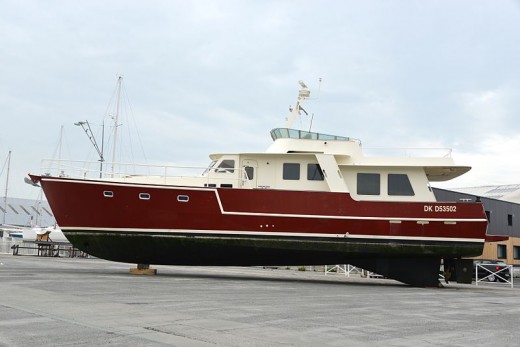
Hydroplaning Boats (and how they work) :
Also called thunderboats, (for good reason!) some of these vessels may reach up to 100 miles per hour! (160.9 kilometers per hour) The current world record for the highest speed attained on the water is being held by an Australian man by the name of Ken Warby. Even though he built the vessel (the Spirit of Australia) in his own backyard, he can get her going up to 500 kilometers per hour! (310.6 miles per hour) These boats are normally driven by single or duo-inboard gas or diesel engines. Propellers or jet drives may be used, though propellers are more common. A select few have outboards, though it is rarely seen because they tend to run a higher fuel bill than what they are worth. (Unfortunately, this is how most of these types of vessels are...) There are many hull designs, some very intricate, and look more like an aircraft or a spaceship than anything else. Most however consist of simple long and lean hulls, with the hydrofoil 'wings' or fins below, and of these, there are two different styles.
On surface piercing (SP) hydrofoils, the wings are V or U-shaped, and you can see the tips of the wings appear above the surface of the water when the boat is in motion. This is how the very earliest of hydroplaning vessels were built, and the design is still in use as of today. The earliest known functional design was built by an Itailian inventor and engineer named Enrico Forlanini. He started creating models in 1898, and by 1906, he tested his full-scale model and attained a top speed of 68 kilometers per hour! (42.5 miles per hour.) This boat had a 'ladder system' of hydrofoil fins and a singular 60 horsepower engine, but it was a little different than most, as the single engine drove two shafts with counter-rotating air propellers.
With fully submerged (FS) hydrofoils, the fins will look somewhat like an inverted T, or as a V. (The T may sometimes be bent back.) These types of 'wings' are not very visible when the boat reaches high speeds. This is the more commonly used design today, and this is due to the fact that they are much more steady in rough water and more comfortable for the passengers and crew. They do however need to have a hydraulic or computerized system which can change the 'angle of attack' on the water in rough seas. (Both types may be used for chartering, whale watching, and the like.)
Hydrofoils function using the same basic principles as airfoils. When traveling at very high speeds, the shape of the fins creates a strong lifting force. This works by causing the water to rapidly ascend downward, underneath the hull, and that in turn creates an counteractive, upward force. This process (when in the water) is called planning. The first hydroplaning crafts were built with the lightest materials available, which was usually wood. Aluminum and fibreglass are now the more popular choices. (If fact, wood is almost never seen anymore, unless the hydroplaning vessel is quite small) These vessels can be from anywhere from 12 feet to some as large as 200 feet. All have very high horsepower-rated engines.
A Diagram Of Hydrofoil Types :
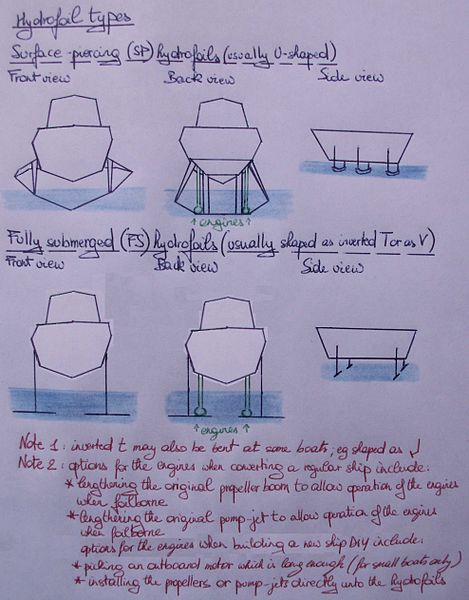
The MV Miss Madison (fully submerged foil) winning the gold :
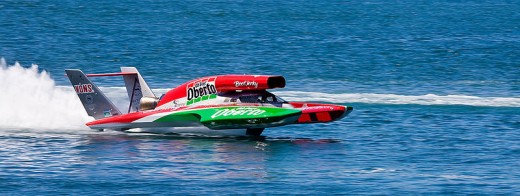
Pontoon Boats :
This is often the first choice for a would-be boater. (Especially in lakes, and other smaller bodies of water.) They are wonderful for family outings, fishing, or just a slow little cruise round about, and are often quite affordable compared to different types of crafts of the same size. So, what's a pontoon, you ask? Well, it is basically just a flotation device (usually being cylindrical in shape) which may support a heavy load. A pontoon boat is virtually a single, flat deck supported by two pontoons. The pontoons will usually be constructed of aluminum, steel, or fibreglass, and will sometimes be filled with foam to prevent sinking. (Though most of the time, they are filled with air and sealed tight.) The 'deck area' of these vessels vary greatly in shape and structure, however, what is normally seen is a simple deck with a lounge area (perhaps a couch, a table, and a few other seats) and a fishing area at both ends. A cover or roof of sorts with usually be present so that you may be protected from the weather. One or two outboard motors of various sizes propel these crafts. (Inboards are pretty rare, unless the craft is custom-built.)
* Note : These vessels are not meant for open water, as they can be notoriously tippy. If you plan on any ocean cruises, I would strongly suggest a cabin cruiser, or a similar craft which can take the beating and 'ride' the waves rather than 'ploughing' through them.
An average family-sized Pontoon Boat :
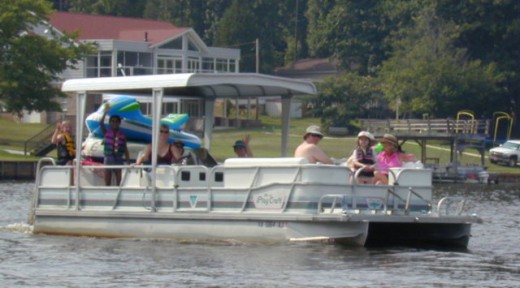
The Skiff and the Dinghy :
A Skiff and a Dinghy are essentially the same thing. They are any small boat (which may be powered by an outboard motor or oars for the smaller ones) that can be anywhere between 6 to 20 feet. Anything larger would be considered a tender, a lifeboat, or a pinnace. Some of the larger vessels may even have multiple sets of oars. Even the wee ones normally have two sets. These boats were originally made from wood,(and often still are) but as with all other vessels these days, synthetic-built boats are becoming all the rage. (As these materials are not organic, they cannot deteriorate. However, they can and will get dirty. (though clean-up is pretty easy) and the gel coat they often have can also suffer from a rot-like condition called 'fibre glass pox.' Fibreglass is popular, as well as inflatable vessels. They are made with fibreglass or plastic bottoms, and the inflatable parts are made of various types of fabric coated with either Hypalon, PVC, or neoprene. Steel and aluminum are also a top choice. There are many styles and designs that these boats may come in. There are double-hulled designs, long and skinny fast boats which may have a small keel, or ones which are short and squat, with flat bottoms. (As with inflatables.) Many others exist as well.
*Note : If you have recently purchased a larger vessel of some kind and plan on going on any long journeys, (or even just a stroll down and up the river) I strongly suggest that you take a dinghy of some sort with you. (Or at least obtain a smaller outboard 'kicker' motor.) You never know when your engines may fail you, a rope gets caught in your propeller, or some other similar emergency which can leave you 'drifting'. Even an outboard motor with a rather low horsepower rating can still save you in time of need. We used to have a 10-foot fibreglass double-hulled dinghy with a 4-horse mercury outboard which has saved our butts many a time. One day on a sailboat trip, we got caught in a nasty storm, and our little diesel engine failed us. So my partner hopped in the dinghy and (slowly) together we steered ourselves to safety. And this wasn't a small sailboat either... It was a wooden Peterson 30-footer (gaff-rigged) that weighed 10 tons. ...You would be amazed at the weight a dinghy or skiff can pull. So, to say it simply, they are totally worth the extra couple of bucks. (Most range anywhere from a couple of hundred for those equipped only with oars to a couple thousand for a really nice one with a high horsepower rating.)
A good captain always brings his dinghy :
